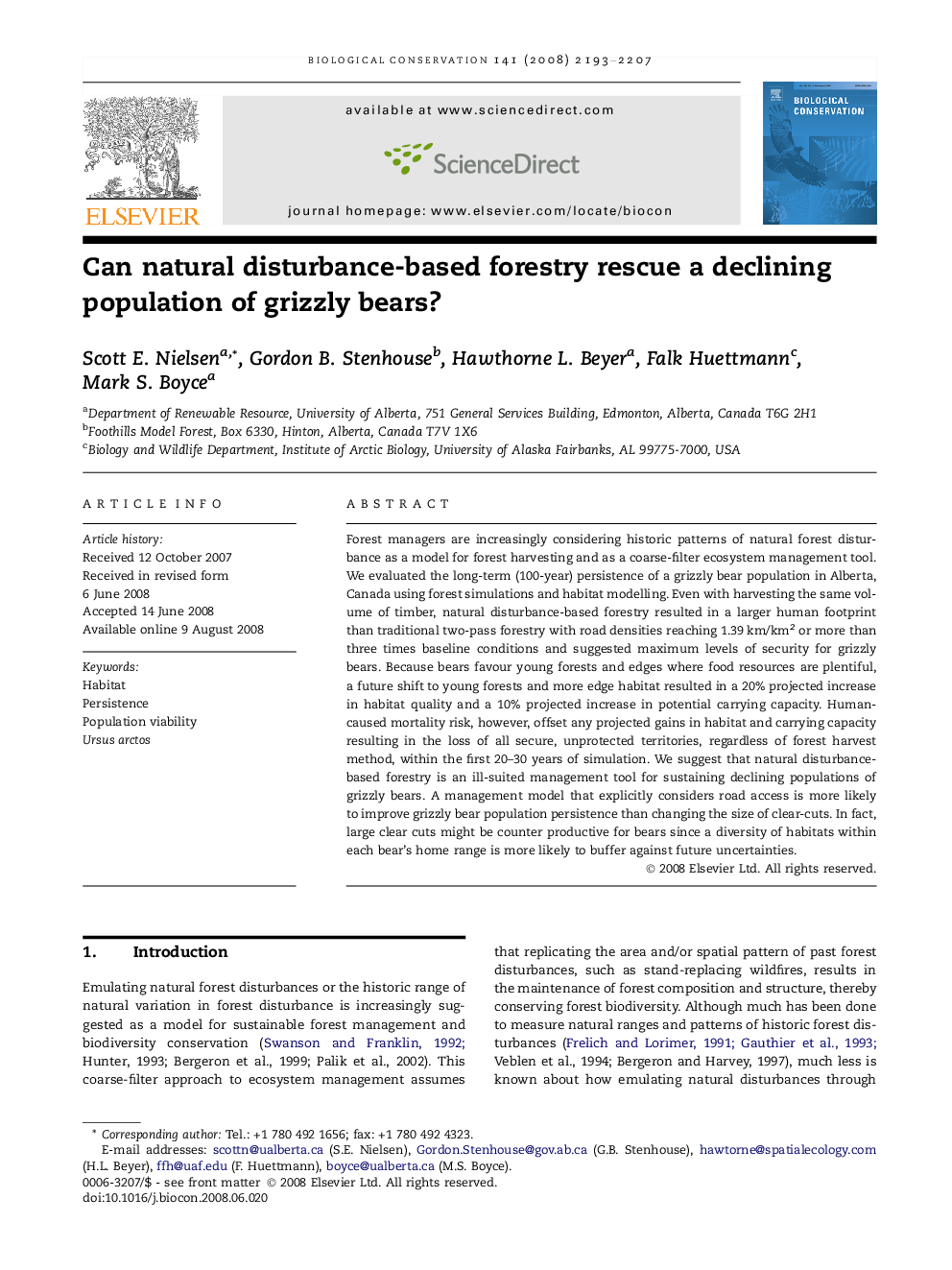| کد مقاله | کد نشریه | سال انتشار | مقاله انگلیسی | نسخه تمام متن |
|---|---|---|---|---|
| 4386808 | 1304579 | 2008 | 15 صفحه PDF | دانلود رایگان |

Forest managers are increasingly considering historic patterns of natural forest disturbance as a model for forest harvesting and as a coarse-filter ecosystem management tool. We evaluated the long-term (100-year) persistence of a grizzly bear population in Alberta, Canada using forest simulations and habitat modelling. Even with harvesting the same volume of timber, natural disturbance-based forestry resulted in a larger human footprint than traditional two-pass forestry with road densities reaching 1.39 km/km2 or more than three times baseline conditions and suggested maximum levels of security for grizzly bears. Because bears favour young forests and edges where food resources are plentiful, a future shift to young forests and more edge habitat resulted in a 20% projected increase in habitat quality and a 10% projected increase in potential carrying capacity. Human-caused mortality risk, however, offset any projected gains in habitat and carrying capacity resulting in the loss of all secure, unprotected territories, regardless of forest harvest method, within the first 20–30 years of simulation. We suggest that natural disturbance-based forestry is an ill-suited management tool for sustaining declining populations of grizzly bears. A management model that explicitly considers road access is more likely to improve grizzly bear population persistence than changing the size of clear-cuts. In fact, large clear cuts might be counter productive for bears since a diversity of habitats within each bear’s home range is more likely to buffer against future uncertainties.
Journal: Biological Conservation - Volume 141, Issue 9, September 2008, Pages 2193–2207